England's Stove Works 55-SHP22E User manual
- Category
- Cookers
- Type
- User manual

INSTALLATION & OPERATION MANUAL
MODEL NUMBERS: 25-PDV 55-SHP22 55-TRP22
25-PDVE 55-SHP22E 55-TRP22E
Thank you for purchasing this product from a fine line of heating equipment.
We wish you many years of safe heating pleasure with your new heating appliance.
Save These Instructions.
IMPORTANT: IF YOU HAVE A PROBLEM WITH THIS UNIT DO NOT RETURN IT TO
THE DEALER. CONTACT TECHNICAL SUPPORT @ 1-800-245-6489.
Please Note the Following Precautionary Statements:
NOTE: WE DO NOT RECOMMEND PELLET STOVES AS YOUR ONLY SOURCE OF HEAT.
CAUTION: Please read this entire manual before installation and use of this pellet fuel
burning room heater.
Keep children, furniture, fixtures and all combustibles away from any heating
appliance.
WARNING: USE OF OUTSIDE AIR IS MANDATORY WITH THIS UNIT.
DO NOT OPERATE UNIT WITH HOPPER OPEN. LID MUST BE SHUT AND TIGHTLY SECURED.
DO NOT OPERATE WITH DOOR OPEN
SAFETY NOTICE
FAILURE TO FOLLOW THESE INSTRUCTIONS COULD RESULT IN PROPERTY DAMAGE,
BODILY INJURY OR EVEN DEATH. FOR YOUR SAFETY AND PROTECTION, FOLLOW ALL
THE INSTALLATION INSTRUCTIONS. CONTACT YOUR LOCAL BUILDING OR FIRE
OFFICIALS FOR RESTRICTIONS AND INSTALLATION INSPECTION REQUIREMENTS
(INCLUDING PERMITS) IN YOUR AREA.
Questions? Need Parts or Options? www.englanderstoves.com
Rev. 5/06
England’s Stove Works highly recommends the use of smoke detectors and
Carbon Monoxide detectors with any hearth product, including this unit. Follow all
manufacturer’s instructions when using smoke or Carbon Monoxide detectors.
Mobile Home Use:
These freestanding pellet units are approved for mobile home or doublewide installation with
outside combustion air hook-up. See “Flue System” section of manual.
Mobile home installation should be in accordance with the Manufactured Home and Safety
Standard (HUD), CFR 3280, Part 24.
WARNING
: Do Not Install in Sleeping Room
CAUTION
: The structural integrity of the mobile home floor, wall and ceiling/roof must
be
m
a
in
ta
in
ed
.

2
A letter from our Technical Support department:
Thank you
for purchasing this fine product from England’s Stove Works!
England's Stove Works was started, and is still owned by, a family that
believes strongly in a "Do It Yourself" spirit – that’s one reason you
found this product at your favorite “Do It Yourself” store.
We intentionally design and build our stoves so that any homeowner can
maintain his or her unit with basic tools, and we're always more than
happy to show you how to do the job as easily and as inexpensively as
possible.
From our free,
downloadable service sheets; to our Pellet Service Video;
to our new "wizard-style," click-through Troubleshooting guide on our
web site, we have always tried to help our customers stay "heat-ready,"
especially when oil and electricity prices continue to skyrocket.
Please look at our vast Help section on our web site and call our
Technical Support department at (800) 245-6489 if you need any help
with your unit. We are nearly always
able to help “walk you through” any
repairs, problems or questions you may have.
PLEASE NOTE
: While information obtained on our web site and through
our 800 number is always free of charge, there will be a service charge
incurred with any “on-site” repairs or maintenance that we may arrange.
Wishing you years of efficient, quality and “comfy” heating,
England’s Stove Works
Technical Support Department
www.englanderstoves.com
(800) 245-6489
IF YOU HAVE A PROBLEM WITH THIS UNIT DO NOT RETURN IT TO THE DEALER.
CONTACT TECHNICAL SUPPORT at 1 (800) 245-6489.

3
IMPORTANT INFORMATION
1. Check local installation codes for your area. Call your Homeowner’s Insurance representative
for inspection of your stove’s installation.
2. Read and comply with the instructions in this manual.
3. This unit should be tested (dry run) before loading pellets for 20 minutes. The stove should
automatically shut itself off after the 20-minute dry run.
4. Your stove is designed to burn Premium Wood Pellets only. Burning pea coal, cherry pits,
or anything other than wood pellets will void your warranty. Pellets with high ash content will
burn dirty and require the unit to be cleaned more often.
5. Be sure your pellets are not damp or wet. Keep sawdust out of the unit.
6. Use three-inch (3”) U.L.-approved PELLET VENT TWIST-LOCK PIPE when installing this stove
and follow the manufacturer’s specifications for installation and clearances
(we highly
recommend Simpson Dura-Vent pellet twist-lock pipe) (AC-3000 kit). For installations over
4000 ft. above sea level the exhaust should be vented with 4"pellet vent pipe (AC-3100 kit).
Even though this pipe interlocks, it is a good idea to seal all connections with high temperature
silicone (AC-RTV3). Use at least three screws to secure the pipe to this unit’s exhaust blower.
Also, if you do not use U.L.-approved twist-lock pellet pipe, be sure to use U.L.-approved Pellet
Vent pipe, and fasten each joint of the pipe with at least three screws.
Outside combustion air is mandatory for these units to work properly. Make this connection
using a 1
7
/
8
” I.D. metal pipe (steel, aluminum or copper) and coupler. Be sure to secure the
pipe to the unit with a clamp or aluminum tape. The outside end should be covered (screened)
to prevent any foreign matter from entering the system.
Try to keep the number of bends in this pipe to a minimum. Our Part Number PU-OAK (Outside
Air Kit with flex pipe) can be used.
NOTE: If an older unit, measure the opening to determine what size pipe to use.
NOTE: If the total run of the intake air connection exceeds 6’, use 3” metal pipe and coupler
instead.
7. Regularly inspect the burn pot area and, if any crust forms, remove it with a poker.
8. The ash in the burn pot should be removed regularly, depending on your burn rate. The area to
the right and left of the burn pot is for ash storage; keep the air holes in the burn pot clean for a
more efficient burn. Check your exhaust system frequently. Refer to “Ash Removal and
Disposal” section.
9. Keep pellets and all other combustible materials a safe distance from the unit.
10. This unit will require floor protection if installed on a combustible surface. The minimum floor
protector for this unit is 36” x 36” which should give you at least six inches (6”) of protection at
the rear and each side, and six inches (6”) minimum in the front of the unit.
11. Horizontal runs should not exceed four feet (4’) with a maximum vertical flue height of thirty five
feet (35’). At fifteen feet (15’), the pipe should be increased to four inch (4”) pellet vent pipe.
12. This unit should be turned off and allowed to cool prior to cleaning. Any ashes should be kept in
an airtight metal container and not disposed of until they are completely cooled.
13. Read the instructions thoroughly, including instructions concerning the digital control board, and
save them for future reference.

4
14.
Do not allow paint, chemicals or construction dust on or near your unit. Do not allow liquid or
ANY foreign materials on or inside your unit. Shut your unit down and cover it when painting,
construction or similar activity is taking place. Wipe and clean your unit after any construction is
done in your home, or if any foreign material gets on or inside your unit. You may also need to
remove the rear and side cover plates to your unit (unplug unit first) and vacuum and clean the
motors and inside of your unit.
15. Improper gasket maintenance, including failure to replace gaskets, can cause air leaks resulting
in smoke-backs.
16. Remember that, as with any appliance, there is user responsibility involved, including
installation, operation and maintenance of this product. Be sure to check local codes, and call
Technical Support at (800) 245-6489 if you have any questions.
17. Be sure to follow the directions of all manufacturers of third party products that you use,
including exhaust pipe, etc. Never use gasoline, lantern fuel, charcoal lighter fluid, diesel
fuel or any other flammable liquid to start the fire. If you manually start your unit,
recommended fire starter materials are: Wax-impregnated wood chips, cardboard cubes
or firestarter gel designed for pellet stoves (see section on Manually Starting Unit).
Follow any manufacturer’s directions for these products, and NEVER place gel or any
firestarter on any hot surface or hot coals. Never apply any firestarter products of any
kind to a hot surface or hot coals.
18. Basement Installation: We recommend basement installation be performed only by a
professional installer. For basement installations, a 3” (three inch) pipe and coupler must be
used for Outside Combustion Air, and a minimum clearance of 3’ (three feet) must be
maintained from the ground to the pellet vent exhaust pipe outside the dwelling. Keep in mind
that each elbow used reduces draft by 15%; it is good practice to add 3’ (three feet) of vertical
rise for each elbow used. Example: After the 2
nd
elbow used, have 6’ (six feet) of vertical rise
before terminating your vent pipe.
UNIT PREPARATION
1. Attach the spring handle to the door by turning it counterclockwise.
Important: Also check hopper latches – must be tight so that the top is sealed to prevent
back-burn.
2. Test your 110-volt outlet for current and then plug in the unit. (We highly recommend a surge
protector for our pellet unit, as the control panel is electronic).
3. It is important to note that this stove is equipped with a dual auger system. The top auger runs
intermittently and drops pellets to the bottom auger; the bottom auger runs constantly and
simply pushes the pellets forward to the burn pot. The control board (“Heat Range”) setting
determines the top auger feed rate.
4. The stove has a digital read-out control board and is started by pressing the “ON” touch pad.
This will start the upper auger, bottom auger and exhaust blower. The room air blower will start
later as the stove reaches the pre-set blower temperature (see “Control Board” section for
further explanation).
5. Check to be sure both augers and the exhaust blower are operating before connecting the unit
to the flue system. Be sure to “dry run” your unit for 20 minutes before connecting it to the flue
(it should stop automatically after 20 minutes).
Visit our web site at www.englanderstoves.com for helpful information,
fre
q
uentl
y
asked
q
uestions,
p
arts/accessor
y
orders and more!

5
Proper Impingement (Baffle) Plate Placement
in Pellet Stove Firebox
Occasionally in shipping, the impingement (baffle) plate may shift out of its proper position. If
this is the case with your stove, follow these instructions to return the plate to its proper position.
1. Remove the plate from the stove, holding the plate by its tab handle, with the cutout notch
facing upwards.
2. Turn the notched end into the doorway (as shown above), and lift the plate up to allow the
bottom of the plate to fit in the doorway.
3. Let the bottom of the plate rest on the firebox, and then push the bottom of the plate flush
against the back wall of the firebox. At this point, the plate will lean forward (toward the front
of the stove) slightly, and will come in contact with the front of the stove above the door.
4. Finally, center the plate on the firebox, so that it will be centered above the fire when the
stove is in operation.
Technical Support: (800) 245-6489 www.englanderstoves.com
IMPORTANT NOTICE: This unit must be properly installed to prevent the possibility
of a house fire or “smoke-back.” The instructions must be strictly adhered to.
Do not use makeshift methods or material which may compromise the installation.
Your unit requires periodic maintenance and cleaning (refer to manual). Failure to
maintain your unit may lead to a variety of problems, including but not limited to
smoke spillage into the home. England’s will not be liable for consequential or
indirect damages to property or persons resulting from the use of this product.
Visit our web site at www.englanderstoves.com for helpful information, frequently asked
questions, parts/accessory orders and more!

6
FLUE SYSTEM
Caution: Follow the pipe manufacturer’s installation instructions and directions for passing
through combustible walls and ceilings.
Be sure to check local codes in your area.
NOTE: See the installation drawing later in this manual (Illustration 1).
This unit is equipped with a negative draft system that pulls combustion air through the burn pot
and pushes the exhaust air out of the dwelling. If this unit is connected to the flue system other than
the way explained in this manual, it will not function properly.
For any of these installations, keep in mind that each elbow used reduces draft by 15%; it is
good practice to add 3’ (three feet) of vertical rise for each elbow used. Example: After the 2
nd
elbow used, have 6’ (six feet) of vertical rise before terminating your vent pipe.
Pellet Vent Pipe
The UL approved pellet vent pipe that we recommend is a twist lock system; however, it is still
recommended that high temperature silicone (AC-RTV3) be used at each joint. England’s Stove
Works recommends the use of Simpson Dura-Vent® twist-lock pipe (AC-3000 kit) (if you use other
pipe, consult your local building codes and/or building inspectors, and secure each joint with at least
three screws—see Important Information, above). Do not use “B” vent gas pipe or galvanized pipe
with this unit. The pellet pipe is designed to disassemble for cleaning and should be checked
several times during the burning season — pellet vent pipe is not furnished with the unit and must
be purchased separately. For installations over 4000 ft. above sea level the exhaust should be
vented with 4"pellet vent pipe (AC-3100 kit). Do not install a flue damper of any kind in this
system, and do not connect this unit to a flue system serving another heating appliance.
Through the Wall
To vent the unit through the wall, connect the pipe adapter to the exhaust motor adapter. If the
exhaust adapter is at least eighteen inches (18”) above ground level, a straight section of pellet pipe
can be used to initially pass through the wall (see Illustration 1). Your dealer or our factory should
be able to provide you with a kit that will handle most of this installation, which will include a wall
thimble that will allow the proper clearances through a combustible wall. Once outside the structure,
a three-inch (3”) clearance should be maintained to the outside wall and a clean out tee should be
placed on the pipe that extends through the wall. We recommend a minimum of three feet (3’) of
vertical pipe with a 90-degree turn away from the house. At this point, a one-foot (1’) section and
horizontal cap will complete the installation (see Illustration 1).
A wall strap should be placed just below the last 90-degree section to make the system more
stable. If you live in an area that has heavy snowfall, it is recommended the installation be taller
than three feet (3’) to get above the snowdrift line.
The same type installation can be used if your stove is below ground level by adding the clean-
out section and vertical pipe inside until ground level is reached. However, we recommend
basement installation be performed only by a professional installer. For basement installations, a 3”
(three inch) pipe and coupler must be used for Outside Combustion Air, and a minimum clearance
of 3’ (three feet) must be maintained outside the dwelling from the ground to the Pellet Vent
Exhaust Pipe.
The through-the-wall installation is the least expensive and simplest installation. In a through-
the-wall installation you should be mindful of the snowdrift line, as well as dead grass and leaves.
We recommend a three foot (3’) minimum vertical rise on the inside or the outside of the dwelling.
Never terminate the end vent under a deck, in an alcove, under a window or between two windows.
Call (800) 516-3636 to inquire about the AC-3000 Through-the-Wall Kit
or the AC-3100 High Altitude Kit.

7
Through the Ceiling
When venting the stove through the ceiling, the pipe is connected the same as through the wall,
except the clean out tee is always on the inside of the house, and a 3” adapter is added before the
clean-out tee. You must use the proper ceiling support flanges and roof flashing supplied by the
pipe manufacturer -- follow the pipe manufacturer’s directions and Illustration 1 in this manual.
It is
important to note that if your vertical runs of pipe are more than fifteen feet (15’) at this point, the
pellet vent pipe should be increased to four inches (4”) in diameter. Do not exceed four feet (4’) of
pipe on a horizontal run, and do attempt to use the least number of elbows in the flue system. If an
offset is used it is better to install a 45-degree elbow whenever possible. Please remember,
installing elbows may inhibit your draft by up to 15% per elbow.
Existing Flue System
If you are replacing a wood stove with a pellet unit the chimney or pipe should be thoroughly
cleaned before proceeding with the installation. The flue system should be either masonry or a UL
approved pre-manufactured Class A flue system. The flue thimble should be either six inches (6”) or
eight inches (8”) and the proper reducer (6” to 3” or 8” to 3”) can be purchased at your local dealer.
Connect a three inch (3”) tee with clean-out to the pipe adapter -- seal this with high temperature
stove cement, then extend your pipe to the installed reducer at the thimble. If the thimble is in the
ceiling, the pipe will go straight up, but if the thimble is in the wall another 90-degree elbow will be
required to make the connection.
Outside Air (Outside Combustion Air Intake)
Outside air is mandatory for this unit to operate properly
. This unit has been designed and
tested with this connection, because so many homes are airtight and there is not adequate
combustion air available inside the dwelling. The air intake pipe is located on the bottom side of the
burn pot (from the rear) and measures 1 ½” inside diameter (I.D.). The connection can be made
with a metal 1
7
/
8
” I.D. coupler and pipe (see “Important Information” section of manual), and should
exit through the wall. Be sure to secure the pipe to the unit with a clamp or aluminum tape. The
outside end of the pipe should be covered (screened) to prevent foreign matter from entering the
system. Our Outside Air Kit (Part Number PU-OAK) can be used. If the unit is located below
ground level, you will need to run the pipe up and then outside the dwelling. NOTE: If the total run
of the connection exceeds 6’, if more than 2 elbows are used, or if a basement installation, use 3”
metal pipe (and coupler) instead.
Note
: If an older unit, measure the opening to determine what size pipe to use or couple to.
Mobile Home Installation
Secure the heater to the floor using the two holes in the pedestal. If the unit is on a combustible
surface, you will need to drill matching holes in the floor protection that you choose (see Floor
Protection section). Do not disturb the structural integrity of the home, and be sure the unit is
permanently electrically grounded to the chassis of your home. Remember that outside combustion
air is mandatory, and not to install the unit in a sleeping room of the home.
Important Notes Concerning Installation:
*IMPROPER INSTALLATION: The manufacturer will not be held responsible for damage
caused by the malfunction of a stove due to improper venting or installation.
Call 800-245-6489) and/or consult a professional installer if you have any questions.
IMPORTANT: Improper hook-up (too much pipe, too many elbows, etc.) will cause
the unit not to operate. Call Technical Support (800-245-6489) if you have
questions about your hook-up or if your unit will not operate.

8
FLOOR AND WALL PROTECTION
Floor Protection
If your floor is constructed of a non-combustible material such as brick or concrete, there is no
need for floor protection. If the floor is constructed of a combustible material such as hardwood,
linoleum, or carpet, then you will be required to use floor protection between the unit and the
combustible. The protection should be U.L. approved or equal, and should be large enough to
provide a minimum of six inches (6”) behind and on both sides of the stove. The clearance in front
of the stove should be at least six inches (6”). This freestanding pellet unit will need a minimum 36”
x 36” floor protector.
Wall Protection
From the rear and the sides of this stove only six inches (6”) of clearance is required to
paneling, wallpaper or drywall. The pellet vent pipe would require the standard three inches (3”)
clearance, or as recommended by the manufacturer. Normally additional wall protection is not
required with this type unit.
1. If 3” flue pipe exceeds 15’ in length, increase to 4” flue pipe for remaining flue connections.
2. Total flue length should not exceed 35’.
3. Horizontal run not to exceed 4’.
4. Floor protector required: Min. size 36” x 36”.
5. If the total run of outside air connection exceeds 6’, if more than 2 elbows are used, or if a basement install,
use 3” metal pipe (and coupler) instead.
6. Outside Air is mandatory for proper safe operation.
Masonr
y
Connection
Our Part AC-3000 is
acceptable for
through-the-wall
installation.
(AC-3100 for 4000+
ft. installations.)
Must have minimum
3” adapter before tee
for longer run.
For shorter run (such
as Masonry
Connection below),
tee alone is acceptable.
Basement Installation should
be performed by professional
installer. Use 3” metal pipe
and coupler for Outside
Combustion Air. Minimum 3’
clearance from ground to the
Pellet Vent Exhaust Pipe.
Illustration 1
Freestanding Pellet Installation
Caution: Follow the pipe manufacturer’s installation instructions and directions for
passin
g
throu
g
h combustible walls and ceilin
g
s. Check local codes in
y
our area.

9
OPERATING INSTRUCTIONS
CAUTION: DO NOT OPERATE WITH THE DOOR OPEN.
If door is left open (approximately) two minutes, unit will stop feeding and fire will go out.
Do not burn trash (paper bags, etc.) in this unit.
This stove has an induced draft system and is designed to operate continuously, as frequent
shutdown is not required. The digital control board operates the unit with a time delay-relay system;
this system controls the top auger feed rate by operating for a predetermined number of seconds
while the bottom auger runs constantly. The setting of the “Heat Range” touch pad will control the
heat output and the amount of pellets the unit will burn (see “Control Board” section and Illustration
2). Note: This stove is using solid fuel and will not restart automatically.
* NOTE: Blower Speed will automatically be adjusted to the desired Heat Range that you select.
Horizontal Feed System
This unit has a top and a bottom auger that are separated by four inches (4”); a 1-RPM motor
drives each auger. The top auger drops pellets to the bottom auger tube, and the bottom auger
pushes the pellets forward to the burn pot. This ensures there is no build-up of fuel in the bottom
auger tube. As pellets enter the burn pot the combustion air is drawn across the fuel.
START- UP PROCEDURE
Caution - Never use gasoline, lantern fuel, charcoal lighter fluid, diesel fuel, or any other
flammable liquid to start the fire.
1. Be sure the hopper is clean and free from foreign materials. Be sure there is current at your
outlet (we do recommend a surge protector with our unit).
2. Before your first fire dry run your unit (with no pellets in the hopper) for 20 minutes.
Press the “ON” button to begin the dry run. After the 20 minute dry run, the control board
will return to “OFF.” An error code will appear in the Heat Range and the Blower Speed
windows as “E-2,” which means the unit failed to start normally. After this code is received
and you are sure the unit is working properly, fill the hopper with wood pellets. Do not allow
any part of the bag or any foreign material in the hopper, as this may jam the augers.
Ensure that all pellet matter is cleared from the hopper lid gasket, make sure the hopper lid
latches and the door of the unit are securely closed and press the “ON” button; this will clear
the error code and restart your unit.
Start-Up
When the “ON” button is pressed from a cold start, the unit is in “Start-Up” (after 3 seconds,
there will be an “S U” in the Heat Range and Blower Speed windows to verify this). While in this
mode, the unit has a preset heat range and will remain in this mode for 20 minutes to prevent the
unit from over-firing. During this start-up period you can set the Control Board at the setting you
desire; after the start-up is complete, the unit will run at the user setting.
Manually Starting Your Unit
If for some reason the unit does not ignite after pressing the “ON” button and going through the
Start-up procedure, clean any pellets out of the burn pot (to prevent over-feeding), and manually
start your unit. This may be done simply by placing a handful of new pellets in the burn pot, then
spreading a small amount of pellet fire starter gel over the pellets and igniting them. After the
pellets ignite, close the door to your unit and press the “ON” button (if the door is closed before the
pellets fully ignite, the Exhaust Blower could put out the fire). Recommended fire starter materials:
Wax-impregnated wood chips, cardboard cubes or firestarter gel designed for pellet stoves. Follow
any manufacturer’s directions for these products, and NEVER place gel or any firestarter on any hot
surface or hot coals. Never use gasoline, lantern fuel, kerosene, charcoal lighter fluid, diesel fuel or
any other flammable liquid to start the fire. If you have any further problems with the Auto-Start
Igniter, call Technical Support.

10
E-Codes
“E-Codes,” or Error Codes, are codes that will appear in the Heat Range and Blower Speed
windows of the Control Board if your unit experiences problems. If you receive any of these codes,
first attempt to reset your unit by pressing the “ON” button (only once). If the unit continues to
display any E-Code(s), please contact Technical Support at (800) 245-6489 before further
attempting to restart your unit.
1. E-1 = Vacuum Loss
2. E-2 = Fail to Start
3. E-3 = Over Temperature Limit
NOTE: “E-0” indicates “No Error”
First Fire: Adjust the “Heat Range” to a “5” setting and allow the stove to burn in this
manner for at least three (3) hours. This will allow the unit to “cure out” as the
paint and the oils from the manufacturing process burn off. We recommend you
open doors and windows in your dwelling during this process.
Subsequent Cold Starts: In a cold start situation, the unit should be operated at a “5” setting
until the room air blower begins to operate.
NOTE: The start-up cycle for this unit with the Auto-Start Igniter is 13 minutes. Press the
“ON” button only once on start-up. Pressing the “ON” button a second time during
the start-up cycle will cause the start-up cycle to begin again.
IMPORTANT: If the unit fails to start properly, or does not properly complete the Shut-Down
procedure, open the closest outside door and a window to eliminate the home’s
natural draft BEFORE opening the stove’s door or hopper lid. This will allow
any smoke to exit through the external air hook-up instead of spilling into the home.
SHUT-DOWN PROCEDURE
WARNING: NEVER SHUT DOWN THIS UNIT BY UNPLUGGING IT FROM THE POWER SOURCE.
Refer to the following instructions:
Press the “OFF” touch pad to put the stove in the “Shut-Down” mode. There will be an
“S D” in the Heat Range and Blower Speed windows while the unit is shutting down to verify this.
At this time the red light above the “OFF” pad will illuminate. When the “OFF” pad is touched the top
auger will instantly stop feeding pellets to the bottom auger tube, but the room air blower, exhaust
blower and bottom auger will continue to operate. When the internal temperature drops to 95
degrees the room air blower will cease to operate, and when the internal temperature drops to 90
degrees the bottom auger and exhaust blower will stop. The red light will then shut off and the
entire stove will be shut down. The hotter the unit is operating, the longer it will take for the stove to
complete the Shut-Down cycle.
Note: The unit will exit the Shut-Down cycle if you press any buttons during Shut-Down.
Note: If the room temperature stays above 70 degrees the stove will remain in the Shut Down
mode for 60 minutes, regardless of the temperature reading at the heat sensor. If the stove
stays on longer than 60 minutes the unit will automatically turn off.

11
DAILY OPERATION
Refueling the Unit
Always press the “OFF” touch pad before refueling. This stove has a (approximately) 60-lb.
hopper, and should be refilled when the hopper level drops to three or four inches.
Note: The hopper lid will be warm; therefore, you should always use some type of hand protection.
NEVER place your hand near the auger while the stove is operating.
Note: Always ensure that all pellet matter is cleared from the hopper lid gasket before closing. Be
sure to close and latch hopper securely before re-firing. Do not operate this unit with the
hopper lid open or unsecured.
Power Outage
If the power to the unit is interrupted for approximately three minutes or less, the unit will
resume operation when power is restored according to the following table:
Unit’s State Before Power Loss State When Power Returns
ON Start-Up
Start-Up Start-Up
Shut-Down Shut-Down
OFF OFF
If the power is interrupted for more than (approximately) three minutes, the unit will be “OFF”
when power returns.
Important: Do NOT open the hopper lid or the door to the unit during power outage. Open
the closest outside door and a window to eliminate the home’s natural draft.
Wait for power to be restored and then press the “ON” button to re-start the unit, if necessary.
We highly recommend the use of a surge protector with your unit, as power surges and failures
can affect the operation of any electrical appliance.
We do not recommend leaving home with the stove on the higher heat ranges; it is
recommended that the stove be left on the lower heat ranges (Heat Range setting 1 or 2).
NOTE: Remember: 1) It is very important for the unit to be vented properly (see instructions on
Outside Air), as the natural draft is needed to clear the smoke from the stove. 2) Do not
open the hopper lid (or the unit’s door). This may cause fire to burn in the hopper.
Fuel Outage
If the unit should run out of pellets, simply reload the hopper and press the “ON” button (only
once) to re-start the unit. If the unit runs without pellets, after one hour the unit will shut down.
NOTE: Even if flames are visible inside the fire box always
press the “ON” button to ensure that
your unit will restart.
Combustion Blower Failure
If the Combustion (exhaust) Blower should fail on this unit, a Vacuum Shut-Down Switch will
automatically stop the stove. This will shut your unit completely off, and there will be an “E-1” code
in the Heat Range and Blower Speed windows on the Control Board. At this point you will need to
contact Technical Support at (800) 245-6489.
NOTE: It is very important for the unit to be vented properly (see instructions on Outside Air), as
the natural draft is needed to clear the smoke from the stove.

12
ASH REMOVAL AND DISPOSAL
IMPORTANT: While the amount of ash generated by this unit is not excessive compared to
log-burning woodstoves, keeping the unit clean and free of ash is essential
for peak performance. Too much ash build-up hampers airflow and reduces
the unit’s efficiency, and can cause smoke-back. Follow these directions at
least as frequently as the schedule below, or more often if needed.
Daily Ash Maintenance
Press the “OFF” touch pad and allow the stove to burn for five (5) minutes prior to opening the
door. A long-handled screwdriver or long-handled putty knife can be used to scrape off any build-up
or crust in the burn pot area. This can then be pushed to the left or right into the ash storage area.
Semi-Weekly Ash Removal
Twice each week: Shut the unit down by pressing
the “OFF” pad and allowing the unit to go through the
complete Shut-Down cycle. Allow the unit to
completely cool down and then remove the ashes
with a scoop. The ashes should be placed in a non-
combustible container with an airtight lid and should
always be placed on a non-combustible surface or on
the ground until completely cooled and free of hot
cinders.
Once the ash is removed, the burn pot should be
given a thorough inspection. Remove and clean the
burn pot wear plate (refer to the exploded diagram in
the rear of this manual – Illustration 4, and the close-
up diagram shown here), and remove any ash build-
up in the area below the wear plate. Also, be sure
there are no ashes or obstructions in the tube under
the wear plate. Check for any build-up in the front of the burn area. Clean out all air holes (if
necessary a 1/8” drill bit can be used) --these air holes should be kept clean, as they supply
combustion air under and around the pellet fuel. The burn pot assembly should also be thoroughly
cleaned, including the feed auger and feed tube. When replacing the wear plate, ensure that it lies
flat in the firebox and no gaps (from ash residue) are under it.
IMPORTANT: Ash build-up under the wear plate can cause the unit to malfunction.
NOTE: The instructions below concerning the cleaning of the burn pot and wear plate area are
especially important to the function of your stove. Failure to follow them regularly can result in
burn-back and can damage your unit and/or void your warranty.
Illustration 1a
Bottom Auger Tube

13
Monthly Ash Removal
The large baffle plate (12-5/8” x 9-3/8”) that rests above and behind the burn pot (refer to the
section on “Proper Impingement Plate Placement” and the exploded diagram in the rear of this
manual – Illustration 4) should be removed monthly. This can be done by lifting up the plate and
pulling it out. The area behind the plate should then be cleaned thoroughly, and the plate placed
back in the original position.
Use a screwdriver or chisel and break any creosote build-up in the front of the unit, where the
pellets are fed into the burn pot from the Bottom Auger Tube (see Illustration 1a). Moisture in the
pellets and resulting build-up in this area can cause the bottom auger to “squeal” or squeak.
Also inspect your flue pipes, and remove ash buildup from the clean-out tee.
Carbon Removal: During normal operation carbon from the combustion of pellet fuel will tend
to build up on the tip of the auger, on the wear plate and sides of the fire pot, and in the mouth of
the feed tube. It is essential that this residue be removed to ensure trouble free operation of the
unit. The frequency with which this carbon must be removed varies with brands of pellets,
depending on moisture content, wood type, foreign material (dirt, etc.) in pellets, and other factors.
To remove this carbon, simply scrape it off using the blade of a flat tipped screwdriver or similar
instrument; also, to remove it from the feed tube, scrape as much as can be easily reached, then
insert an emery board (i.e. fingernail file made from a popsicle stick and sandpaper) between the
feed auger and the feed tube and sand out any residue not removed from scraping alone. Clearing
this carbon residue from the feed tube is essential for proper operation of the feed auger, which is
designed to float freely in the feed tube allowing smooth fuel flow, a lesser possibility of a jam, and
a quieter unit.
Annual Cleaning
The stove and the flue system should be given a complete cleaning at the end of the heating
season. Remove the burn pot assembly, clean it thoroughly, and re-install it (refer to Illustration 4);
this will require new gasket for the burn pot. Be sure to tighten the set screws when you replace
them, but do not over-tighten. In addition to the cleaning mentioned for semi-weekly and monthly,
the Combustion (exhaust) Blower should be removed annually and the blower tube vacuumed of
any ash build-up. When cleaning or replacing the blower a new gasket (Part # PU-CBG) should be
added between the blower flange and the steel exhaust tube.
Soot and Fly ash: Formation and Need for Removal – The products of combustion will contain
small particles of fly ash. The fly ash will collect in the exhaust venting system and restrict the flow
of flue gases. Incomplete combustion, such as occurs during startup, shutdown, or incorrect
operation of the room heater will lead to some soot formation which will collect in the exhaust
venting system. The exhaust venting system should be inspected at least once every year to
determine if cleaning is necessary.

14
MAINTENANCE
CAUTION: UNPLUG THE UNIT PRIOR TO ANY SERVICE WORK!
SEE EXPLODED DIAGRAM (ILLUSTRATION 4) FOR PARTS REFERENCE
Parts Orders: (800) 516-3636 www.englanderstoves.com Questions: (800) 245-6489
NOTE: Visit our web site for downloadable maintenance sheets and/or a service video that details
and illustrates the following maintenance tasks.
Rear Panel Removal
WARNING: To perform any maintenance inside the rear of the unit, the stove must be out
(no fire), cooled down and unplugged. Electrical shock can occur if the unit is
not unplugged from power.
To remove the rear panel, simply loosen the eight (8) screws (size 5/16”) and flex the panel.
The panel should come off without fully removing the screws.
Instructions for maintenance and part replacement procedures can be found on:
www.englanderstoves.com
Auger Motors
The Auger Motor and gearbox are one complete assembly (Part # PU-047040), and can be
removed by disconnecting the power leads and loosening the (
5
/
16
” head) set bolt in front of the
assembly. This bolt tightens down on the flat side of the gear shaft and locks the gear shaft and
auger shaft together – once the bolt is loosened, the entire assembly will slide from the locking
collar. There are two motor assemblies on the unit, and both rest on a shelf when not in operation.
When replacing a motor, the assembly should always be placed to rest on this shelf prior to starting
the unit.
Auger Bearings and Auger Shafts
The auger bearings (Part # PU-UCF204-12) are a sealed unit and do not require lubrication
. To
replace the Top Auger, all the fuel must be removed from the hopper as well as from the Top Auger
assembly. Once this is done, the four bolts that hold in the bearing can be removed, followed by the
complete auger assembly. Loosen the two (2) set screws with a 1/8” allen wrench, which will
disconnect the bearing from the shaft (the bearing assembly and auger assembly can be replaced
by reversing this procedure). When placing the auger assemblies in the unit, always tighten the
four bolts in a diagonal pattern to ensure the bearings and shafts are aligned properly.
NOTE: Follow the same procedure to work on the bottom auger, with the exception that the pellets
do not have to be removed from the hopper.

15
Convection Blower
The Convection (room air) Blower (Part # PU-4C447) is located on the left side of the unit and
can be removed by disconnecting the power leads and removing the four mounting screws. Once
this is done, the blower will slide out of the stove. This procedure can be reversed to install a new
blower.
Combustion Blower
To clean or replace the Combustion (exhaust) Blower (Part # PU-076002B), the power leads
and the pellet vent pipe must be disconnected. Next, remove the screws that hold the blower to the
steel exhaust tube and slide the blower from the stove. The blower impeller, blower tube and steel
blower exhaust tube on the unit should be brushed and vacuumed. When cleaning or replacing the
blower a new gasket (Part # PU-CBG) should be added between the blower flange and the steel
exhaust tube.
Vacuum Switch
This unit is equipped with Vacuum Shut Down Switches (Part # PU-VS and CU-VS), which help
control various functions of the unit. If an operational error occurs in the unit, a switch will either
stop the top (feed) auger or shut the unit off; if the unit turns off an E-1 Code (error code) will
appear in the Heat Range and Blower Speed windows of the Control Board. Situations which could
cause this include power failure, Combustion Blower failure, improper flue installation, a blocked
flue (from rodents, nests, etc.), or “dirty burning” from burning improper fuel (see “Important
Information” at the beginning of the manual).
Gaskets
IMPORTANT: IMPROPER GASKET MAINTENANCE, INCLUDING FAILURE TO REPLACE
GASKETS, CAN CAUSE AIR LEAKS RESULTING IN SMOKE-BACKS.
This unit comes with a 3/4” rope gasket around the door that should be replaced every two
years. To replace the door gasket (Part # AC-DGKC), the old gasket must first be removed entirely
— prior to adding the new adhesive, you may have to scrape the old cement from the door channel.
Once the cement and gasket have been added, the door should be closed and latched for twenty-
four hours to allow the cement to harden.
If you are replacing the window gasket (Part #AC-GGK), the new gasket will already have
adhesive on one side. Remove the paper on the adhesive side and place the gasket around the
outside edge of the glass by forming a “U” with your fingers and placing the gasket around the
glass. You should also replace the Combustion Blower gasket (Part # PU-CBG) whenever you
remove or clean the Combustion Blower.
Finish
This new unit has been painted with High-Temperature Paint (AC-MBSP) that should retain its
original look for years. If the unit should get wet and rust spots appear, the spots can be sanded
with plain steel wool and repainted. We recommend this paint, as others may not adhere to the
surface or withstand the high temperatures.
Glass
This unit has a 9” x 9” ceramic glass (Part #AC-G9, comes with gasket) in the viewing door.
Surface scratches are acceptable and normal, but if this glass becomes cracked in any area, the
unit should be shut down and the window replaced with this high-temperature ceramic glass.

16
Control Board
The Control Board (Part #PU-CB04) is a digital read-out board. This board offers a wide variety
of settings to operate the unit. This part can be removed from the unit by loosening the two outside
screws and pulling the board back to the inside of the stove. The rear access panel should be
removed prior to removing the control board. A 5-amp “quick-blow” fuse is used on this Control
Board.
NOTE: The bottom three control buttons are preset at the factory and should not require any
changes. See “Operating Instructions” and “Daily Operation” section of the manual for
instructions on other Control Board settings.
Recommended Heat Ranges:
Low Burn: Heat Range setting: 1 Room Air Blower setting: 1
Medium Low: Heat Range setting: 2 – 3 Room Air Blower setting: *
Medium High: Heat Range setting: 5 – 8 Room Air Blower setting: *
High Burn: Heat Range setting: 9 Room Air Blower setting: 9
* NOTE: Blower Speed will automatically be adjusted to the desired Heat Range that you select.
N
OTE: The bottom
3 buttons are pre-set at
the factory and do not
need adjustment.
Call Service at
(800) 245-6489 if you
have questions or
problems.
CAUTION:
Illustration 2a
Control Board
Diagram
Caution
Should you see any evidence of smoke in the hopper (smoke back),
immediately close and latch the hopper lid and door to the unit. Open the
nearest windows and door to the outside. Then press the OFF button and let
the unit cool for at least 3 hours. Do not open the door or hopper lid. This is a
maintenance problem that needs to be addressed.
Call Technical Support at (800) 245-6489.

17
CAUTION: Moving Parts May Cause Injury.
Do NOT Operate with Panel(s) Off.
DANGER: Parts May Be Hot. Risk of Electric Shock.
Disconnect Power Before Servicing Unit.
Illustration 2b
Control Board
Diagram
(Wiring)
Notes on termination of Pellet Vent Pipe (see also “FLUE SYSTEM” section of manual):
1. Not less than three (3) feet above any forced air inlet located within ten (10) feet.
2. Not less than four (4) feet below, four (4) feet horizontally from, or one (1) foot above any door,
window or gravity air inlet into any building.
3. Not less than two (2) feet from an adjacent building, and not less than seven (7) feet above grade
where located adjacent to public walkways.
The exhaust exit shall be arranged so that the flue gases are not directed so that it will affect people,
overheat combustible structures, or enter buildings. Forced draft systems and all parts of induced draft
systems under positive pressure during operation shall be installed gastight or to prevent leakage of
combustion products into a building. Through-the-wall vents shall not terminate over public walkways, or
where condensate or vapor could create hazards or a nuisance.
Be sure to follow local codes and all manufacturer’s instructions (including exhaust pipe).
Consult a professional installer and/or call Technical Support if you have any questions.
IMPORTANT SAFETY NOTE: If the unit or chimney connector pipe “glows” red (or
white), the stove is over-fired. This condition could cause a house or chimney fire.
Do not operate your unit too hot, or over-firing may result.

18
Adjusting your Hopper Lid Latches
The seals around the top of the pellet hopper are important to safe and efficient operation of the
unit. The latches installed on these units are designed to pull the hopper lid tight against this seal.
Over the course of operation as these seals “wear in” and compress, the tension of the latches
should be tested periodically, and adjusted if necessary.
To adjust the lid latches, the following tools will be needed; two ½ inch wrenches, or a ½ inch
wrench and a ½ inch socket.
In order to adjust the latch, first open the hopper lid and then lock the latch in its closed position.
Then take the ½ inch wrench and loosen the nut closest to the latch. This nut is then adjusted
closer to the lid itself to tighten the latch. After adjusting this nut to the desired location, hold this nut
in place with the ½ inch wrench, the tighten down the holding nut on the end of the latch shaft with
the ½ inch socket or second wrench to hold the latching assembly in place
After tightening the latches, test the latches for proper tension by locking the lid down and lifting
each front corner of the lid. The lid should be firmly held down by the latches. Repeat the same
procedure if the latch is still not tight enough.
Important: Hopper Lid Latches must be checked periodically and
kept tight so the top is sealed to prevent back-burn.
Illustration 3 –
Hopper Lid Latches

19
ACCESSORY ITEMS
The following accessories can be added to your unit at anytime after purchase; however, let the
unit cool down before adding any accessories.
Thermostats
WALL: An external wall thermostat (such as our Part # GU-1E30-914) can be used on our
pellet units as long as it is a low-voltage that works with millivolt systems. After unplugging the unit,
locate the jumper wire (J-3) on the bottom of the control panel. The two screws should then be
loosened and the jumper wire removed from the board. Next, the two thermostat lead wires should
be slipped into these openings and the screws tightened; the jumper wire should be saved for future
operation without a thermostat.
The unit will operate differently once the wall thermostat is connected – we recommend the
Control Board be set at “9” on Heat Range and Blower Speed while using the thermostat. Refer to
the section on “Start-up Procedure” for information on cold starts.
AC-103, AC-103BN Lip Trim
There is one piece of J-Channel trim in this kit that snaps onto the ash apron lip of the stove.
Match the channel with the correct edge of the ash apron, then remove the protective covering from
the trim and force the piece onto the edge. Although it should stay in place, stove cement can be
used to secure it if necessary.
NOTE: For stoves manufactured prior to 2001, the part number for this kit is AC-101-PU.
AC-106-P (SH-106-P), AC-106-PBN Window Trim
This trim can be attached by using the provided spring clip and some high temperature silicone.
Insert the tee end of the spring clip into the opening on the edge of the trim – this will allow the clip
to fall into the groove. The spring clip will hold well if it is placed on the bottom edge of the trim. We
also suggest that high temperature silicone be used on the corners, to ensure the trim will stay in
place.
Accessories can be ordered from the factory at:
(Parts orders ONLY) -- (800) 516-3636, or on our web site: www.englanderstoves.com
.
Questions/Problems: Please call Technical Support at (800) 245-6489.
You may also order parts and options, view frequently asked questions and more,
on our web site:
www.englanderstoves.com

20
REPLACEMENT PARTS, ACCESSORIES AND OPTIONS
AC-GGK Glass Gasket Kit (gasket only, no glass)
AC-DGKC Door Gasket Kit (#2 on diagram)
AC-114 Brass Louvers (#26 on diagram) (2001 and later Models; for earlier
models call 800-245-6489 for AC-112 louvers)
AC-114BN Nickel Louvers (#26 on diagram)
AC-G9 9” x 9” Glass with Gasket
(#3 on diagram)
AC-SH Brass Door Spring Handle
AC-SHN Nickel Door Spring Handle
AC-MCSP Hi-Temperature Charcoal Paint
AC-MBSP Hi-Temperature Black Paint
PU-AMS Auger Motor Support Gasket
PU-047040 1 RPM Auger Motor Assembly (#18 on diagram)
PU-BP02A Burn Pot Assembly (#’s 5 and 11 on diagram) (2002 and later Models; for
earlier models order
PU-BP96)
PU-076002B Combustion (Exhaust) Blower
(includes 3” adapter)
(#’s 8 and 9 on diagram)
PU-4C447 Convection (Room Air) Blower (#13 on diagram) (2002 and later Models;
for earlier models order PU-4C442)
PU-AF6T Top Auger Shaft (#14 on diagram)
PU-AF11B Bottom Auger Shaft (#14 on diagram) (2001 and later Models; for earlier
models call for assistance)
PU-62-40-151-2 Hopper Lid Latch (2002 and later Models;
for earlier models order PU-103-50) (#25 on diagram)
PU-UCF204-12 Auger Bearing (#16 on diagram)
PU-2X570 ¾” Locking Collar (#17 on diagram)
PU-CB04 Digital Control Board (#12 on diagram)
PU-VS Vacuum Shut-Down Switch (see Control Board diagram)
CU-VS Second Vacuum Switch (see Control Board diagram)
PU-CBG Combustion Blower Gasket (#10 on diagram)
PU-BPG Burn Pot Gasket (#6 on diagram)
PU-ABG Auger Bearing Gasket (#15 on diagram)
PU-HLG Hopper Lid Gasket (#22 on diagram)
PU-CHA Cartridge Heater (Igniter) Assembly (#27 on diagram)
OPTIONS
:
PU-OAK Outside Air Kit
AC-3000 3” Pellet Vent Kit (Through-the-Wall)
AC-3100 4” Pellet Vent Kit (For High Altitudes – 4000+ ft.)
AC-3001 Remote Thermostat (for units built 2003 or earlier)
GU-1E30-914 Wall Thermostat
AC-103 Brass Lip Trim for Ash Apron (2001 and later Models;
for earlier models, order part # AC-101-PU.)
AC-103BN Brushed Nickel Lip Trim for Ash Apron
AC-106-P/SH-106-P Brass Window Trim
AC-106-PBN Brushed Nickel Window Trim
If you have any questions or problems contact the Technical Support Department:
Technical Support Department
P.O. Box 206 Parts Orders ONLY: 800-516-3636
Monroe, VA 24574 Questions: 800-245-6489 (Fax: 434-929-4810)
You may also order parts and options, view frequently asked questions and more,
on our web site:
www.englanderstoves.com
Page is loading ...
Page is loading ...
Page is loading ...
Page is loading ...
Page is loading ...
-
 1
1
-
 2
2
-
 3
3
-
 4
4
-
 5
5
-
 6
6
-
 7
7
-
 8
8
-
 9
9
-
 10
10
-
 11
11
-
 12
12
-
 13
13
-
 14
14
-
 15
15
-
 16
16
-
 17
17
-
 18
18
-
 19
19
-
 20
20
-
 21
21
-
 22
22
-
 23
23
-
 24
24
-
 25
25
England's Stove Works 55-SHP22E User manual
- Category
- Cookers
- Type
- User manual
Ask a question and I''ll find the answer in the document
Finding information in a document is now easier with AI
Related papers
-
England's Stove Works 25-PDV Installation & Operation Manual
-
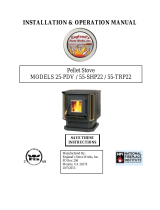 England's Stove Works 25-PDV Owner's manual
England's Stove Works 25-PDV Owner's manual
-
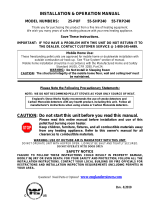 England's Stove Works 25-PUF Owner's manual
England's Stove Works 25-PUF Owner's manual
-
England's Stove Works 55-SHP22L Owner's manual
-
England's Stove Works Stove 25-PDV User manual
-
 England's Stove Works 49-SHC22 User manual
England's Stove Works 49-SHC22 User manual
-
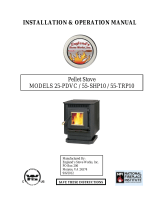 England's Stove Works 55-TRP10 Installation & Operation Manual
England's Stove Works 55-TRP10 Installation & Operation Manual
-
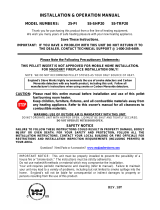 England's Stove Works 55-SHP20 User manual
England's Stove Works 55-SHP20 User manual
-
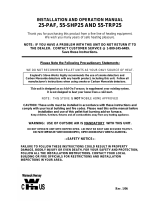 England's Stove Works 25-PAF Owner's manual
England's Stove Works 25-PAF Owner's manual
-
 England's Stove Works Gas Heater 55SHPAH User manual
England's Stove Works Gas Heater 55SHPAH User manual
Other documents
-
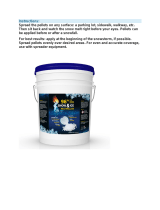 Eco Clean 96CCHLOR-25 User manual
Eco Clean 96CCHLOR-25 User manual
-
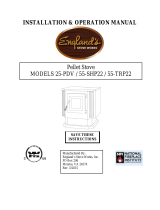 Englander 25-PDVH Installation guide
Englander 25-PDVH Installation guide
-
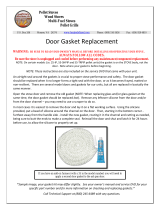 Englander AC-DGKCPM Installation guide
Englander AC-DGKCPM Installation guide
-
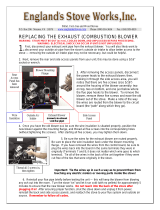 Englander PU-076002B Installation guide
Englander PU-076002B Installation guide
-
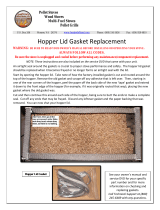 Englander PU-HLG Installation guide
Englander PU-HLG Installation guide
-
 Englander PU-4C447 Installation guide
Englander PU-4C447 Installation guide
-
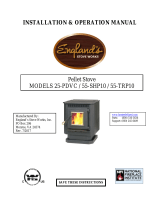 Summers Heat 55-SHP10L User manual
Summers Heat 55-SHP10L User manual
-
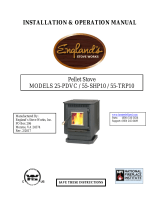 Englander 25-PDVCH User manual
Englander 25-PDVCH User manual
-
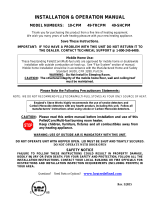 Englander 10-CPM Installation guide
Englander 10-CPM Installation guide
-
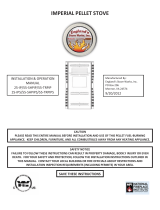 Summers Heat 55-SHPIPL Installation guide
Summers Heat 55-SHPIPL Installation guide









































